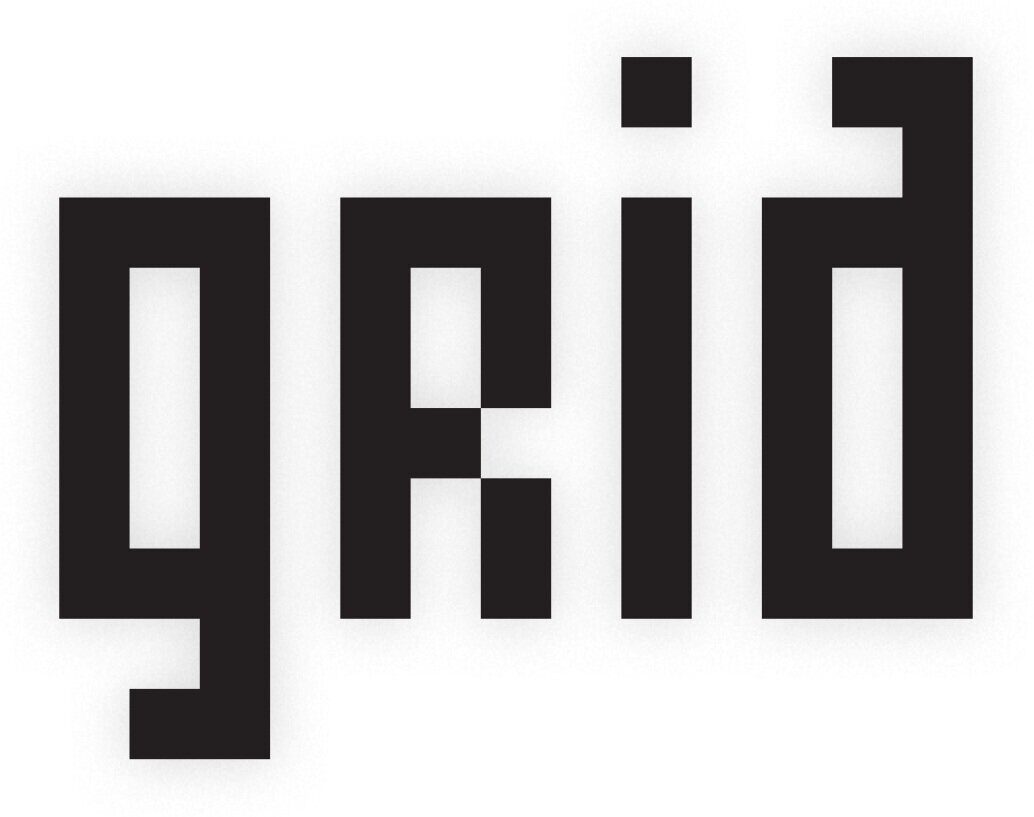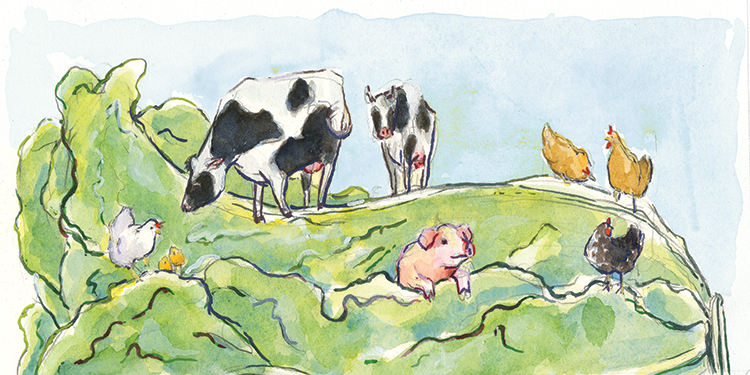Illustration by Natalie T. McGarvey
Back to the Land
by Jerry Silberman
Question: Is vegetarianism the right thing to do?
The Right Question: Is vegetarianism breaking the chain of life?
Voluntary vegetarianism is a relatively recent phenomenon in human society. One of its principal rationales is moral, and insists that killing animals for food is cruel and violent. It also posits that vegetarianism is better for the environment because raising livestock causes air and water pollution, and that it’s wasteful to feed animals food that we could eat ourselves. There are still a lot of hungry mouths to feed.
But the rationale says more about the lack of understanding of the individuals putting it forward than the dynamics of the food chain, and it confuses the impacts of the way that animals naturally live and how they are raised in industrial, concentration-camp agriculture that no one can morally justify.
Any ecological community that evolves in the absence of human tampering and that survives for any length of time has reached an equilibrium, in which resources are continually recycled with the energy input from the sun. Animals of all types eat plants, and each other. Their waste products and corpses release nutrients as they are consumed by other animals and microbes, which break them down far enough to be reabsorbed into green plants. Nitrogen, oxygen and carbon cycles are stable.
Particularly in temperate regions, soil—the living bank of nutrients—is continually growing as chemicals withdrawn from the atmosphere join with minerals brought up by roots from bedrock to create steadily increasing organic matter in the soil. That’s how the soil of the most fertile parts of the Midwest was accrued, in some places several meters deep. This fertile soil is a vast bank of organic matter and humus, storing carbon, nitrogen and other minerals in the compounds that are useful to plants.
The keystone species in creating this soil were buffalo and the grasses they ate. Modern sustainable agricultural practices, studying the habits of the buffalo and other ruminant grass eaters, has shown that the most effective way we have to sequester carbon is to intensively manage grazing. Tons of carbon can be sequestered per acre per year, with little equipment besides some portable fencing to manage the movement of herds.
This buffalo-built soil of the Midwest has largely been washed down to the Mississippi delta, and despite recent efforts to change some agricultural practices, continues to erode. While no-till techniques minimize soil disturbance and reduce erosion, they cannot rebuild soil. That requires the presence of grazing animals, a vital link in the chain of soil fertility, soil building and carbon sequestration.
Raising animals in feedlots, and feeding them grain, is the worst of all possible regimens. Under these conditions, animals are not healthy, their concentrated wastes become noxious pollutants, and huge inputs of chemical fertilizers, manufactured with huge inputs of fossil fuels, are needed to raise their food, which is limited to corn and a few other species along with huge doses of growth-stimulating and prophylactic antibiotics.
The science of rotational grazing is gaining followers steadily, including ranchers who see that healthier animals, healthier soil and much lower inputs are possible. Many of those livestock farmers also understand and appreciate the broader impact of their work in the sequestration of carbon. Milk produced from cows, sheep and goats raised completely on grass (including stockpiled grasses in the field and in harvested hay) has a dramatically different and superior nutritional profile than that produced from confined cows, which is mirrored in the quality of cheese, butter and yogurt manufactured from it.
“100% grass-fed beef” from a Pennsylvania beef ranch, in other words, is one of the best dinners you can have if you are concerned about eating pure, nutritious food, minimizing greenhouse gases, reducing energy consumption and supporting local economies that have a different set of values from the feedlots that supply supermarket shelves and fast food burgers.
The differential impact on our health and environment between a McBurger and a local, grass-fed steak could not be more stark, which is why I haven’t had the former, under any brand name, in a few decades.
Worried about the cruelty in killing the animals? Think again. Wild herds of ruminants have their population controlled by predators, weather and disease. If their natural predators haven’t been exterminated by man, a significant chunk of calves, fawns, et al., will be taken every spring by them. Aging or injured animals will face the same fate. Blizzards and droughts take their toll. Animals raised in intensive rotation have greater safety, and much less stressful lives, than their wild relatives. Everyone has to go sometime, and modern, humane slaughter is a good bit less painful than being shredded alive by a wolf’s jaws.
We must continue to study how nature works in order to understand how we might help feed everyone while managing healthy ecologies that benefit all the species in our ecosystem. And that means starting with the fact that our food chain is a closed loop, with life and death in every link.
Jerry Silberman is a retired union organizer who now devotes his time to negotiating a resilient future for all of us.


